Blind-Spot Collision-Avoidance Assist malfunction and limitations
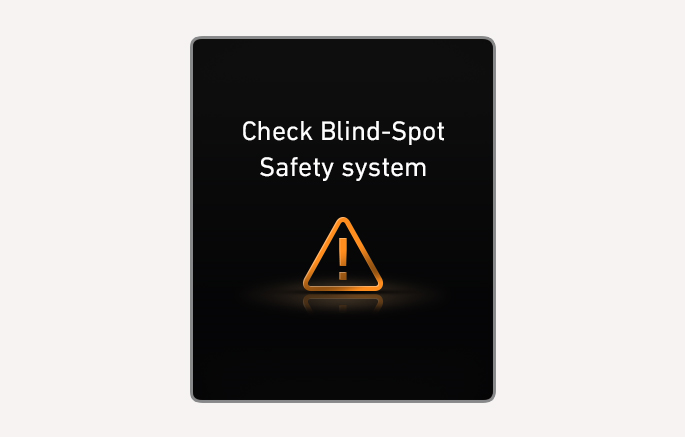
2C_BCAMalfunction
When Blind-Spot Collision-Avoidance Assist is not working properly, the "Check Blind-Spot Safety system" warning message will appear on the instrument cluster for several seconds, and the master (
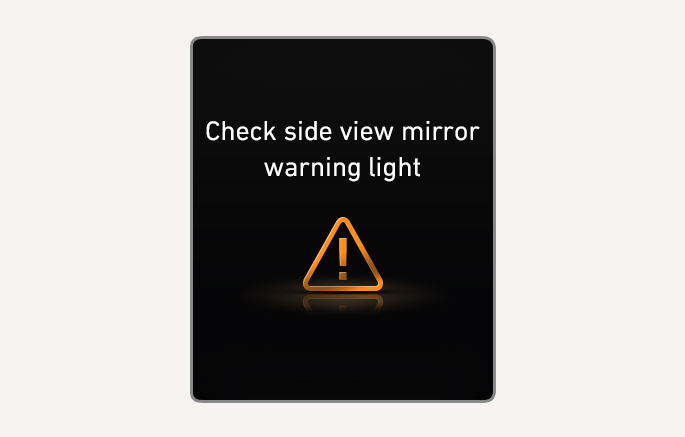
2C_CheckSideViewMirrorWarning
When the outside rearview mirror warning light is not working properly, the "Check side view mirror warning light" warning message will appear on the instrument cluster for several seconds, and the master (
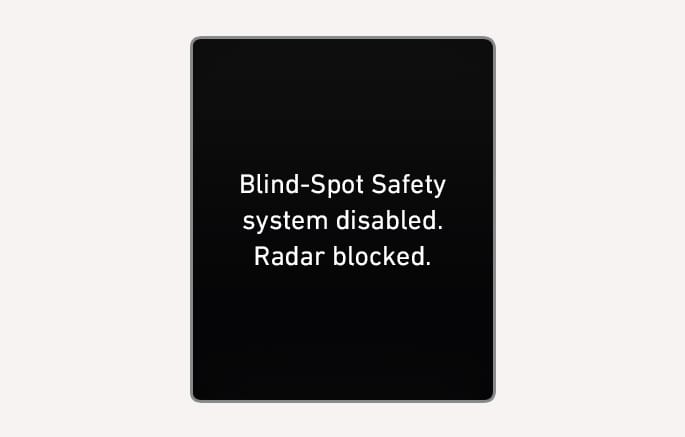
2C_RadarDisableWarning_1
When the rear bumper around the rear corner radar or sensor is covered with foreign material, such as snow or rain, or installing a attachments, it can reduce the detecting performance and temporarily limit or disable Blind-Spot Collision-Avoidance Assist.
If this occurs, the "Blind-Spot Safety system disabled. Radar blocked." warning message will appear on the cluster.
Blind-Spot Collision-Avoidance Assist will operate properly when such foreign material or attachments, etc., is removed, and then the vehicle is restarted.
If Blind-Spot Collision-Avoidance Assist does not operate properly after it is removed, we recommend that your vehicle be inspected by an authorized HYUNDAI dealer.
-
Even though the warning message does not appear on the instrument cluster, Blind-Spot Collision-Avoidance Assist may not properly operate.
-
Blind-Spot Collision-Avoidance Assist may not properly operate in an area (for example, open terrain) where any objects are not detected right after the vehicle is turned on, or when the detecting sensor is blocked with foreign material right after the vehicle is turned on.
Turn off Blind-Spot Collision-Avoidance Assist to install or remove a trailer, carrier, or another attachment. Turn on Blind-Spot Collision-Avoidance Assist when finished.
Blind-Spot Collision-Avoidance Assist may not operate properly, or it may operate unexpectedly under the following circumstances:
-
There is inclement weather, such as heavy snow, heavy rain, etc.
-
The rear corner radar is covered with snow, rain, dirt, etc.
-
The temperature around the rear corner radar is high or low
-
Driving on a highway ramp
-
The road pavement (or the peripheral ground) abnormally contains metallic components (for example, possibly due to subway construction)
-
There is a fixed object near the vehicle, such as sound barriers, guardrails, central dividers, entry barriers, street lamps, signs, tunnels, walls, etc. (including double structures)
-
Driving in vast areas where there are few vehicles or structures (for example, desert, meadow, suburb, etc.)
-
Driving through a narrow road where trees or grass are overgrown
-
Driving on a wet road surface, such as a puddle on the road
-
The other vehicle drives very close behind your vehicle, or the other vehicle passes by your vehicle in close proximity
-
The speed of the other vehicle is very fast that it passes by your vehicle in a short time
-
Your vehicle passes by the other vehicle
-
Your vehicle changes lane
-
Your vehicle has started at the same time as the vehicle next to you and has accelerated
-
The vehicle in the next lane moves two lanes away from you, or when the vehicle two lanes away moves to the next lane from you
-
If any objects that may interfere with the rear corner radar sensor are attached in the vicinity
-
The bumper around the rear corner radar is covered with objects, such as a bumper sticker, bumper guard, bike rack, etc.
-
The bumper around the rear corner radar is impacted, damaged or the radar is out of position
-
Your vehicle height is low or high due to heavy loads, abnormal tire pressure, etc.
Blind-Spot Collision-Avoidance Assist may not operate properly, or it may operate unexpectedly when the following objects are detected:
-
A motorcycle or bicycle is detected
-
A vehicle such as a flat trailer is detected
-
A big vehicle such as a bus or truck is detected
-
A moving obstacle such as a pedestrian, animal, shopping cart or a baby stroller is detected
-
A vehicle with low height such as a sports car is detected
Braking control may not work, driver's attention is required in the following circumstances:
-
The vehicle severely vibrates while driving over a bumpy road, uneven road or concrete patch
-
Driving on a slippery surface due to snow, water puddle, ice, etc.
-
The tire pressure is low or a tire is damaged
-
The braking system has been modified
-
The vehicle makes abrupt lane changes
For more information on the limitations of the front view camera, refer to "Forward Collision-Avoidance Assist (FCA) (Front view camera only)" and "Lane Keeping Assist (LKA)" section in this chapter.
-
Driving on a curved road
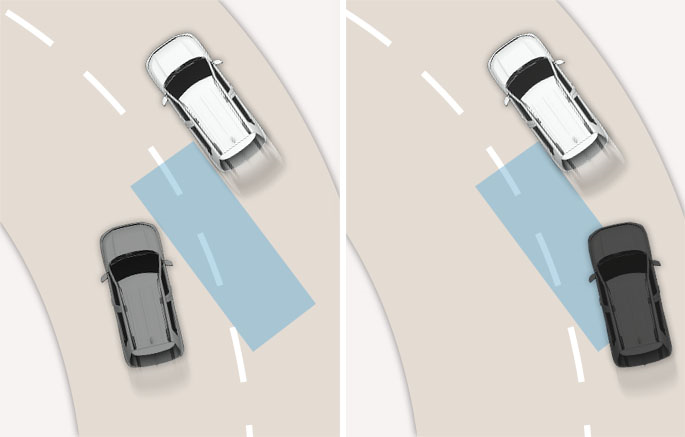
2C_BCADrivingOnCurvedRoad
Blind-Spot Collision-Avoidance Assist may not operate properly when driving on a curved road. The function may not detect the vehicle in the next lane.
Always pay attention to road and driving conditions while driving.
Blind-Spot Collision-Avoidance Assist may not operate properly when driving on a curved road. The function may recognize a vehicle in the same lane.
Always pay attention to road and driving conditions while driving.
-
Driving on an inclined road
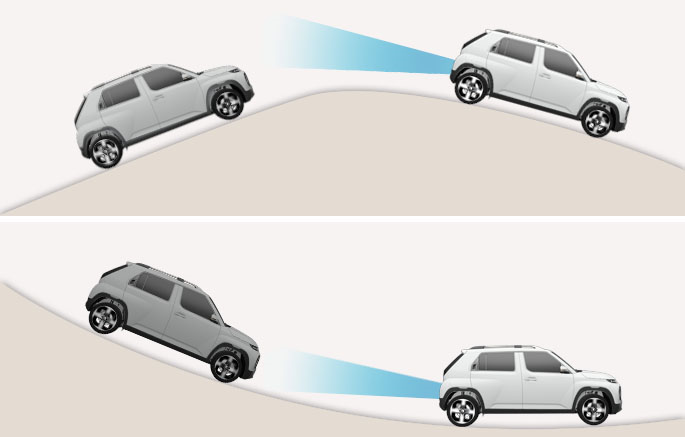
2C_BCAInclinedRoad
Blind-Spot Collision-Avoidance Assist may not operate properly when driving on a slope. The function may not detect the vehicle in the next lane or may incorrectly detect the ground or structure. Always pay attention to road and driving conditions while driving.
-
Driving where the road is merging/dividing
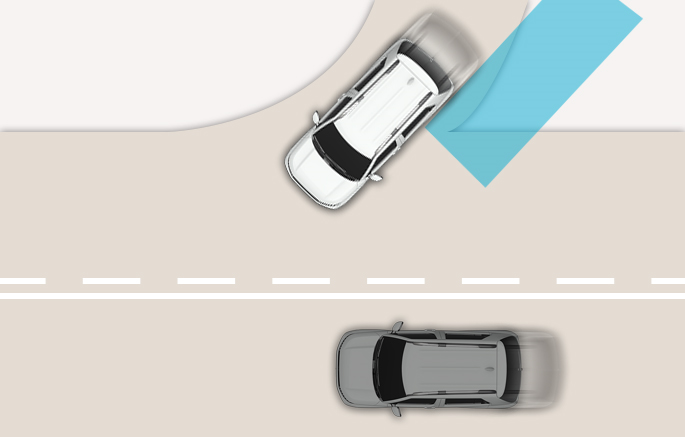
2C_BCAMergingRoad
Blind-Spot Collision-Avoidance Assist may not operate properly when driving where the road merges or divides. The function may not detect the vehicle in the next lane.
Always pay attention to road and driving conditions while driving.
-
Driving where the heights of the lanes are different
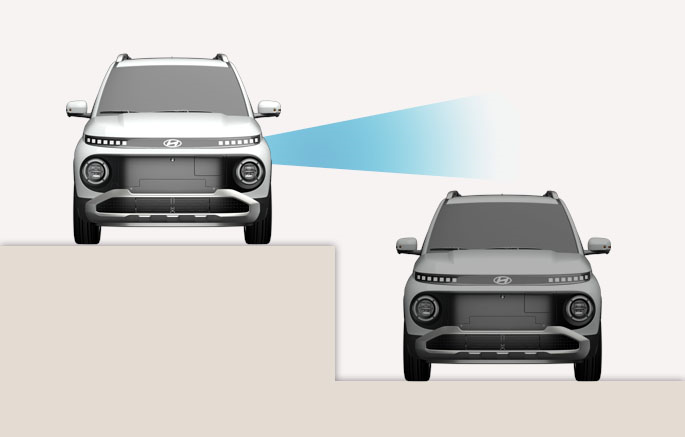
2C_BCAHeightDifference
Blind-Spot Collision-Avoidance Assist may not operate properly when driving where the heights of the lanes are different. The function may not detect the vehicle on a road with different lane heights (underpass joining section, grade separated intersections, etc.).
Always pay attention to road and driving conditions while driving.
-
If any objects that may interfere with the rear corner radar sensor are attached, make sure that you turn off Blind-Spot Collision-Avoidance Assist.
-
Blind-Spot Collision-Avoidance Assist may not operate properly if interfered by strong electromagnetic waves.
-
Blind-Spot Collision-Avoidance Assist may not operate for about 3 seconds after the vehicle is started, or the front view camera or rear corner radars are initialized.